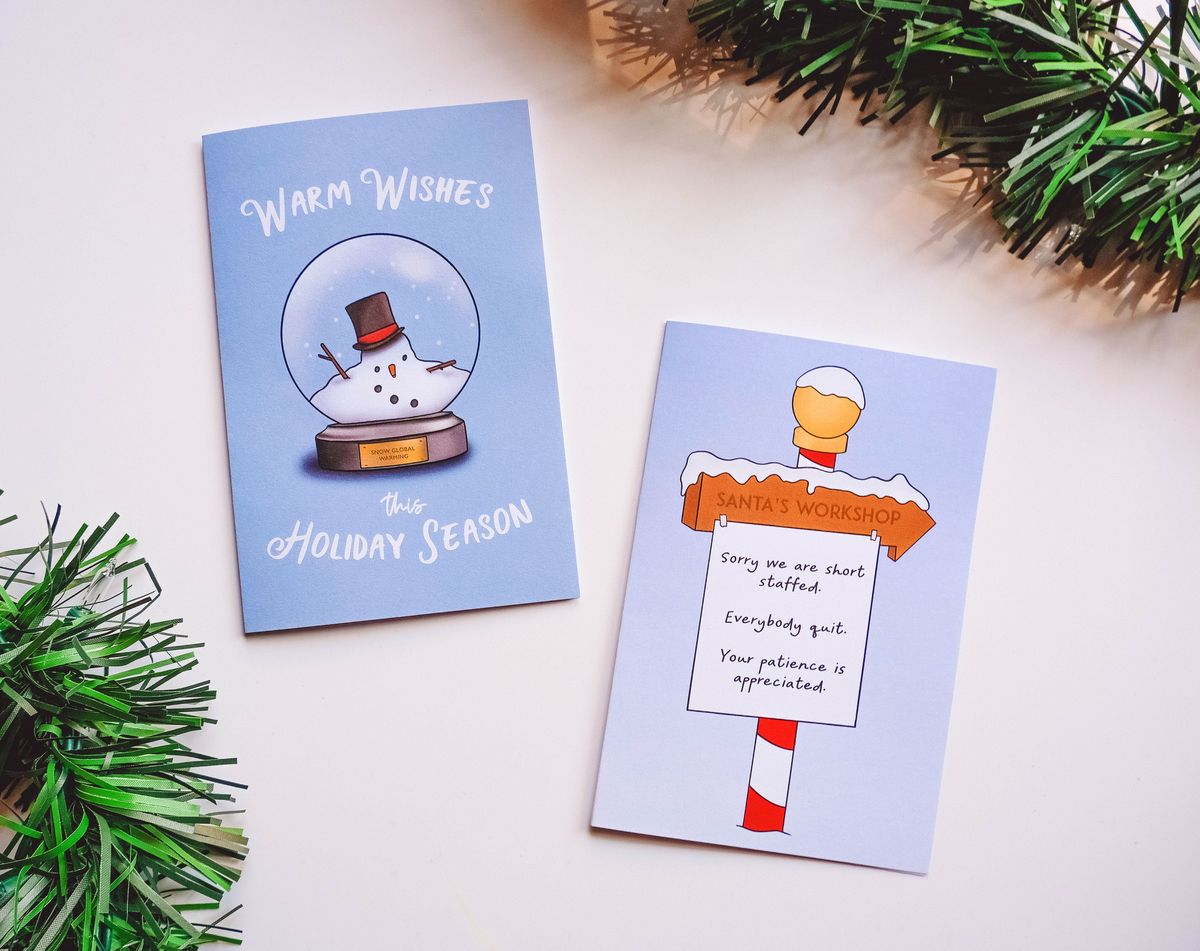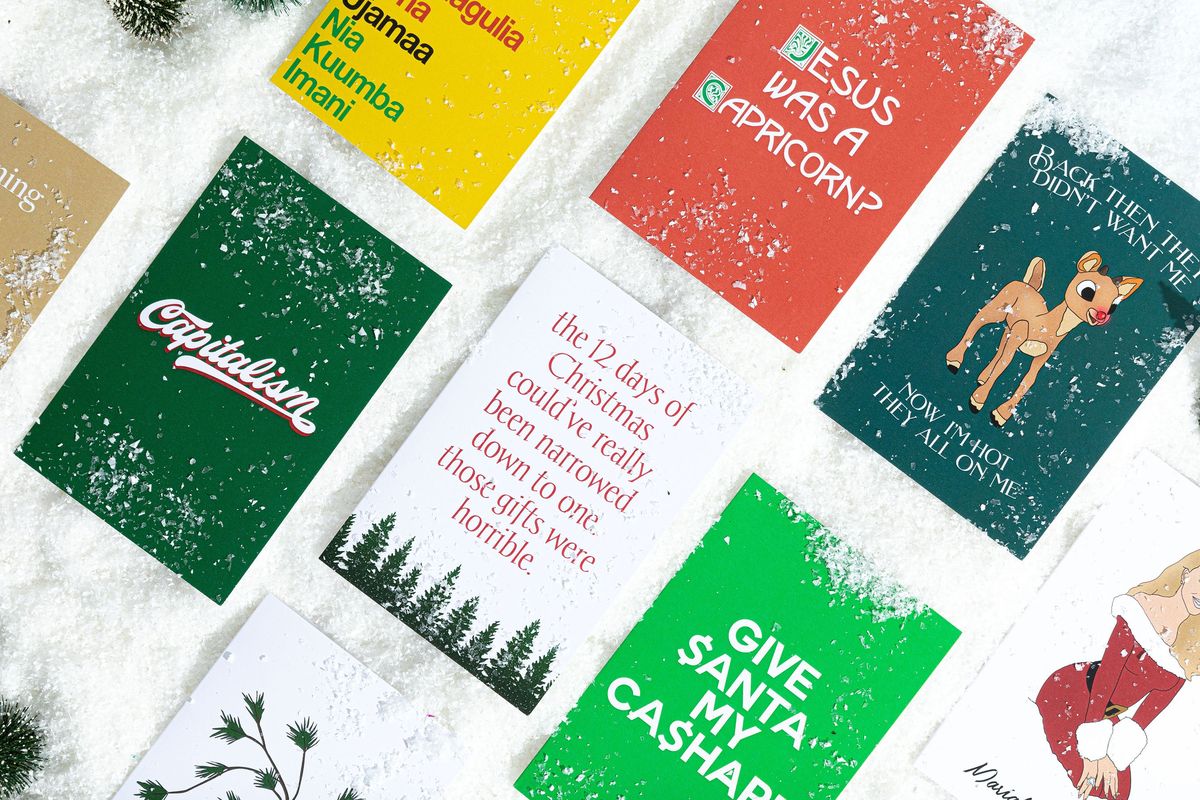You’ve got (snail) mail: Millennials embrace holiday card tradition
Krystal Banner sells cards in her Kaleidadope shop on Etsy. She said sales ticked up during the pandemic. (Krystal Banner/Kaleidadope)
Krystal Banner, like many millennials, recalls that her family didn’t often send Christmas cards when she was growing up. “The holidays were a big deal, but only occasionally would we buy a box of cards from Walmart,” says Banner, 38, an artist who started designing and selling cards on Etsy in 2017 after realizing “there was no diversity in content or people” in the card industry.
Banner’s small Washington, D.C.-based company, Kaleidadope, is flourishing as millennials have their moment with holiday snail mail. The holidays are the biggest card-sending time of the year, with about 1.6 billion holiday cards purchased annually, according to Nora Weiser, executive director of the Greeting Card Association.
And although millennials once may have pooh-poohed the tradition, as they move into their marrying, child-rearing and pet-owning years, they are spending more on cards each year than baby boomers, averaging $6 per card, Weiser says.
“Millennials respond to the analog nature of things. Cards are kind of an organic and pure thing that is anti-digital and really a throwback, sort of like LPs,” says Patrick Priore, Paper Source’s chief product officer, who says 2021 holiday card sales are up 14% compared with 2019. “They think, ‘Oh, our parents used to send these.’ They are cool again.”
Like most things in their lives, millennials want cards to be meaningful and authentic. Lindsey Roy, chief marketing officer of Hallmark, which has more than 3,600 holiday cards in its lineup, says millennials are looking for special cards for important people in their lives.
They prefer to select something personal, not just a generic image they buy by the box, sign and send. “They have teachers to thank or caregivers,” she says. “They want to find the card that is exactly right, and they are willing to pay a bit more if they like the design and it says the right thing.”
Kaleidadope focuses on cards sold individually ($5.50 each) that reflect “color and culture and a sense of humor,” Banner says. When the pandemic hit, she noticed sales on her website ticking up, especially for cards with illustrations and messages that reflected how people were feeling or that provided comic relief.
“I was preparing for everything to be shut down, but it became crazy,” Banner says. This year, she tied some of her holiday designs to social issues: “Snow Global Warming” depicts a snowman melting inside a snow globe, for example.
“Millennials curate their Instagram pages,” she says. “Now they are curating their mail. They like handwriting for the human connection. They are realizing: ‘Cards aren’t as antiquated as we once thought.’ ”
Mariam Naficy, founder and co-CEO of Minted, a source of cards and other goods by independent artists, says millennials are particularly drawn to custom photo cards.
“People start sending cards in their early 30s,” she says. “They care about getting the right photo. They stress about it.” Naficy says words such as “gratitude, grateful and hug” have increased substantially on cards since 2019.
Millennials tend to go for individual artisan cards. They love anything handmade or embellished such as quilled or pop-up cards. They love anything with a cheeky message. “They like humor and a bit of snark,” Weiser says. “Not in the kind of rude, cringey way, but genuine sarcastic humor.”
In addition to seasonal wishes, holiday cards reflect the cultural trends and emotional sentiments of the nation. “The pandemic has fueled a huge increase in pet ownership and, in turn, customers are featuring their four-legged friends on cards,” Naficy says. One of Minted’s bestsellers is a photo card for your pet to send on your behalf, with the words: “Merry Christmas from my humans.”
Packaging is also carefully curated. Some millennials add cheer to their cards with metallic and foil-lined envelopes or by sealing them with Japanese washi tape. Others are buying vintage postage stamps on eBay to add a personalized touch. “People are looking for things that make their envelopes stand out from the stack when it arrives in the mail,” Naficy says.
Card makers have added digital innovations to further entice younger consumers. Hallmark’s new Sign & Send service allows users to write a handwritten message on paper, snap a photo of it and upload it. The company will print it on the card chosen and send it to the recipient and even pay for the postage.
Hallmark has cards with QR codes that connect with websites where the sender can upload videos and photos and choose music. Minted’s QR code cards connect with free holiday websites where the sender can upload videos, photos and text. The card’s recipient scans the code with a smartphone to view the personalized multimedia content.
It seems as if this minimalist-loving generation, known for its disdain of acquiring possessions, may be going soft.
“We found in research that 8 out of 10 millennials actually keep the cards they receive,” Roy says. “Even though they are not a ‘stuff’ generation, they see them as a memento of a relationship.”
Banner says she still has a birthday card that her late grandparents sent her years ago, which she treasures. “I am one of those people. The sentimental value of seeing a person’s handwriting and being able to reflect on that time is so important.” She thinks cards from this year are going to be almost like a piece of history.
“They show people trying to find joy in a period where there are a lot of unknowns and a lot of bad things are happening,” she says. “A card shows life isn’t always butterflies and rainbows, but we can still find those moments to celebrate what we can celebrate.”



